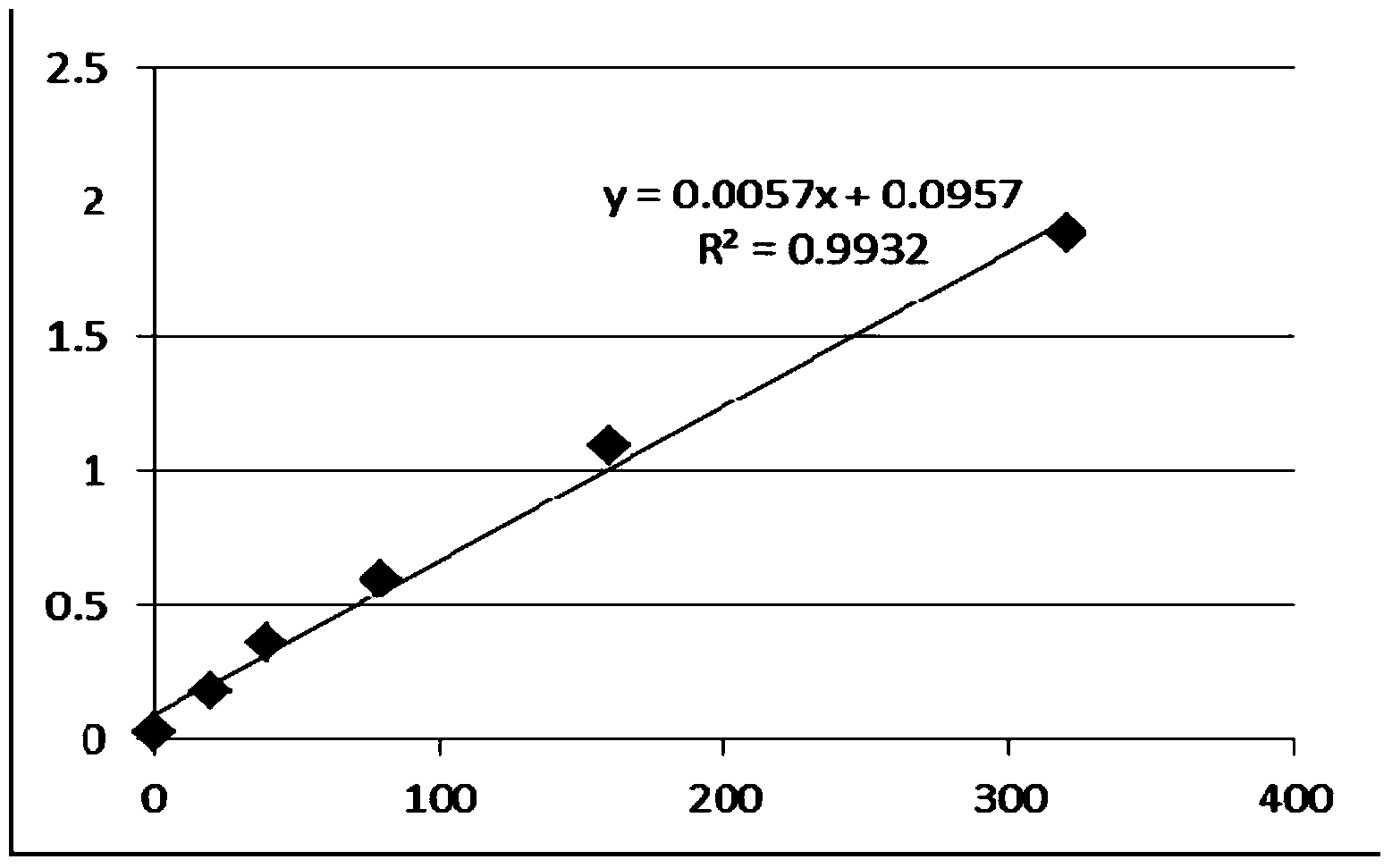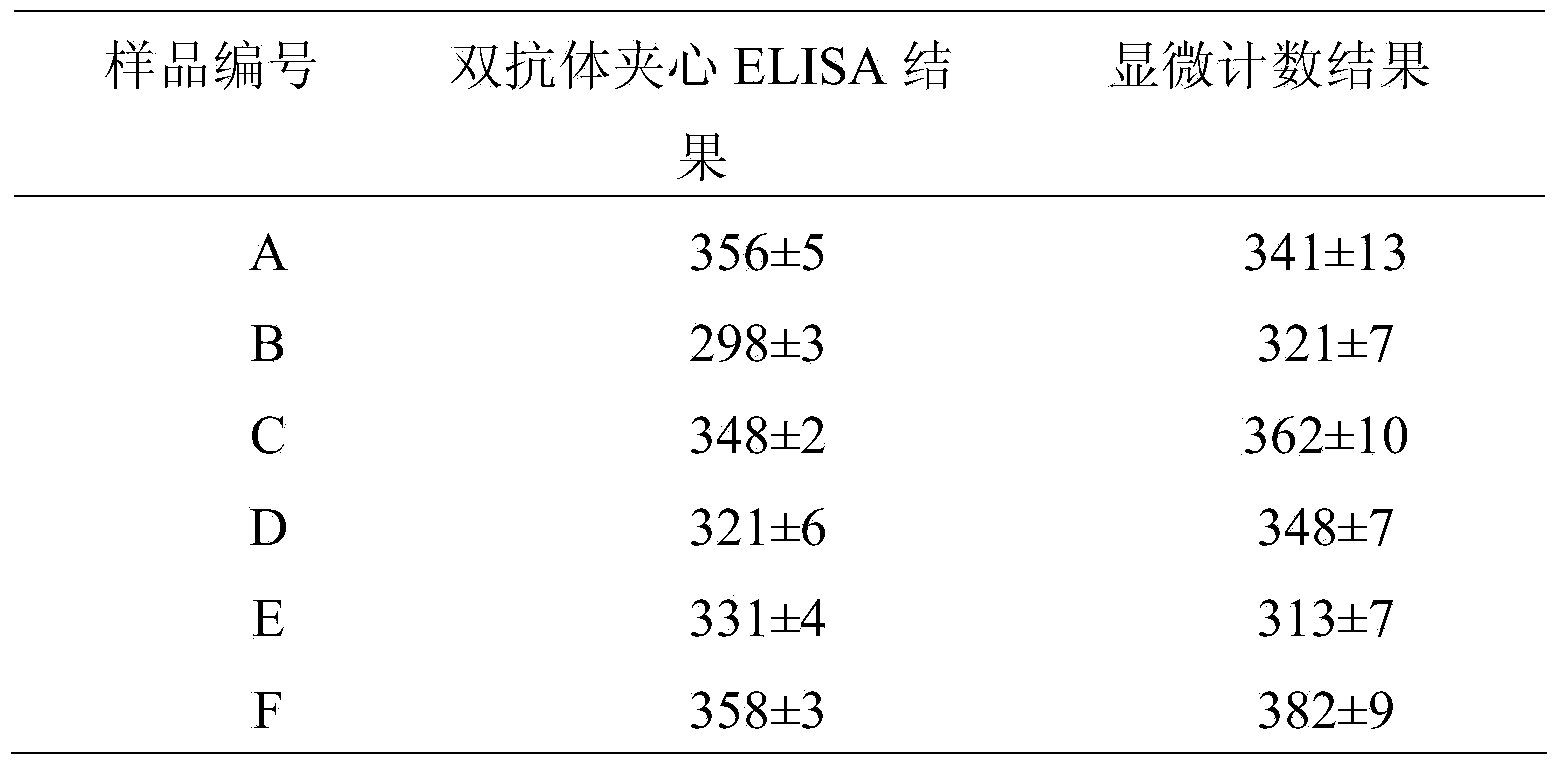Enzyme-linked immuno sorbent assay detection method of Skeletonema costatum
An enzyme-linked immunosorbent reaction and detection method technology, which is applied in the direction of analysis by chemical reaction of materials, measurement devices, and material analysis by observing the influence of chemical indicators, which can solve the problem of difficulty in obtaining highly specific antibodies, etc. question
- Summary
- Abstract
- Description
- Claims
- Application Information
AI Technical Summary
Problems solved by technology
Method used
Image
Examples
Embodiment 1
[0036]The Scutellaria costatum used in the present invention is provided by the Faculty of Life Science and Technology, Ocean University of China. Pure cultures are obtained by repeatedly picking individual algal cells under a microscope. The medium used is a conventional f / 2 medium, and the culture conditions are as follows: the light / dark cycle is 12h / 12h, the light intensity is 4000Lx, and the culture temperature is 22°C-25°C.
[0037] The culture solution of Skeletalum costatum in the logarithmic growth phase was filtered with a 0.45um cellulose acetate membrane to obtain the filter membrane, and the volume was recorded. Put the obtained filter membrane into a 5ml centrifuge tube, add 2ml of SD buffer, and ultrasonically break for 2min to obtain the sample solution of Skeletalum costa, mix and emulsify with an equal volume of Freund's complete adjuvant (SIGMA company), and the degree of emulsification should be as complete as possible , the emulsion was used to immunize m...
Embodiment 2
[0039] In this embodiment, several strains of dominant phytoplankton common in Jiaozhou Bay were selected as reference algae, and they were: Chaetoceros curvisetus, Chaetoceros debilis, Chaetoceros gracilis, Skeletonema costatum, Gymnodinium mikimotoi, Gymnodinium sp, Thalassiosira nordenskioeldii, Pseudonitzschia pungens, Nitzschia crescent (Nitzschia closterium) and Navicula membraneacea were isolated from the natural seawater of Jiaozhou Bay, and pure cultures were obtained by repeatedly picking individual algal cells under a microscope. These algae were cultured and harvested as described in Example 1.
[0040] The specific identification of the anti-Skeletalum costa antiserum was carried out by double-antibody sandwich ELISA procedure. All algae were resuspended in 1ml PBS, counted under a microscope, and the same cell volume (3.2×10 6 ) was suspended in PBS (final volume 1ml). Each seaweed was diluted with PBS to form a concentration gradient, and treated as described...
Embodiment 3
[0047] 1. Cultivate and collect Skeletalum costatum by the method described in embodiment 1.
[0048] 2. Take out the prepared ELISA plate of Skeletalum costa, take an appropriate amount of microwell strips, fix them on the bracket, and equilibrate to room temperature (18-25°C) for later use. Add 0-32*10 6 75ul of Skeletalum costa gradient dilution solution of 1 cell, and 25ul of SD buffer of Skeletalum costatum, incubate at 37°C for 30 minutes, add 100ul of antibody diluent (1:2000), incubate at 37°C for 30 minutes and wash the plate , add enzyme-labeled secondary antibody solution (goat anti-rabbit IgG-HRP, diluted 5000 times), incubate at 37°C for 30 minutes, add enzyme reaction substrate TMB matrix solution after washing the plate, add 2mol / L sulfuric acid to terminate the reaction after incubation for 30 minutes, Read the absorbance at 450 nm for each well on the plate.
[0049] 3. Standard curve: Take the algae liquid of the standard sample of Skeletalum costa in gradie...
PUM
 Login to View More
Login to View More Abstract
Description
Claims
Application Information
 Login to View More
Login to View More - R&D
- Intellectual Property
- Life Sciences
- Materials
- Tech Scout
- Unparalleled Data Quality
- Higher Quality Content
- 60% Fewer Hallucinations
Browse by: Latest US Patents, China's latest patents, Technical Efficacy Thesaurus, Application Domain, Technology Topic, Popular Technical Reports.
© 2025 PatSnap. All rights reserved.Legal|Privacy policy|Modern Slavery Act Transparency Statement|Sitemap|About US| Contact US: help@patsnap.com



